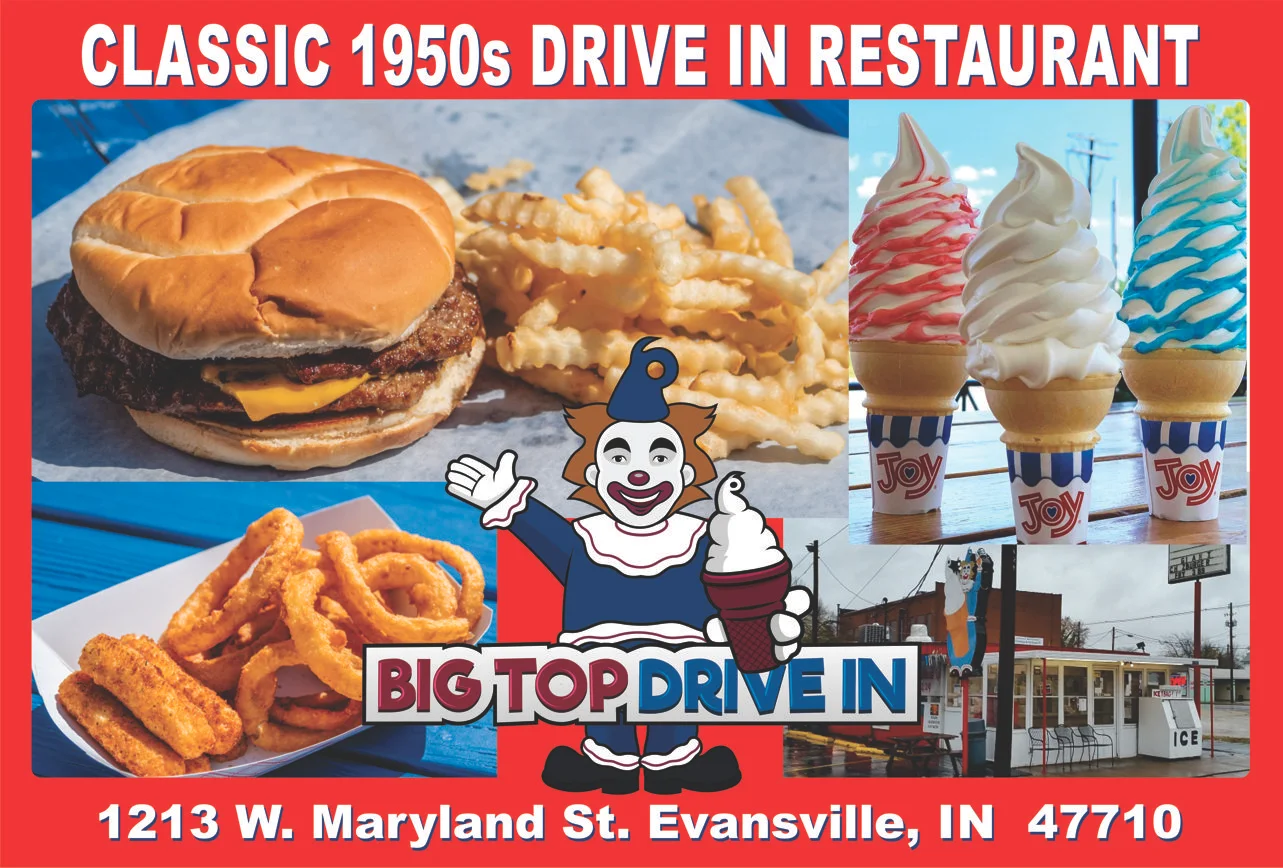Top 10 ways burgers are changing in modern eateries
Wiki Article
Checking Out the current Trends in Food Solution: What Restaurants Are Offering Today
The landscape of food service is progressing swiftly. Dining establishments are adapting to customer demands for much healthier and more lasting choices. Plant-based food selections are ending up being a staple. Technology is reshaping exactly how diners communicate with their meals. On the other hand, ghost kitchens are gaining traction in the distribution industry. As these fads unfold, the effects for both diners and restaurateurs end up being progressively complex. What does this mean for the future of eating experiences?The Rise of Plant-Based Menus
As consumers significantly prioritize health and sustainability, the surge of plant-based menus has come to be a noticeable trend in the food service industry. Restaurants are evolving to fulfill the expanding demand for meat-free choices, providing ingenious meals that interest both flexitarians and vegetarians. Cooks are explore varied components, utilizing grains, beans, and veggies to develop visually enticing and tasty meals (Tenderloins). This change is not just regarding accommodating nutritional preferences yet likewise concerning promoting wellness and environmental responsibility.The development of plant-based menus can be seen throughout different dining facilities, from casual dining establishments to upscale restaurants. Many customers currently seek transparency in their food selections, driving facilities to highlight the nutritional advantages of plant-based offerings. In addition, the increase of plant-based meat alternatives has actually made it much easier for dining establishments to include these alternatives without jeopardizing preference or structure, further solidifying the pattern's location in the modern cooking landscapeEmphasis on Lasting Sourcing
The food solution sector is progressively focusing on lasting sourcing, mirroring an expanding awareness of ecological impacts. Partnerships with regional farms and the consolidation of seasonal food selection offerings are vital approaches that facilities are embracing. These methods not only sustain neighborhood economies but additionally enhance the freshness and top quality of food offered.
Regional Ranch Partnerships
A growing number of food solution establishments are creating partnerships with regional farms to enhance their food selections and advertise sustainable sourcing. These cooperations offer dining establishments with fresher components while supporting neighborhood economies and minimizing carbon footprints connected with transport. By sourcing produce, meats, and dairy products from nearby ranches, restaurants can offer high-grade and seasonal recipes that resonate with environmentally-conscious customers. Furthermore, these partnerships often allow chefs to collaborate straight with farmers, fostering openness about sourcing methods and ingredient top quality. This pattern not just elevates the eating experience but also stresses the importance of sustainability in the food service sector. Therefore, consumers increasingly choose restaurants that prioritize neighborhood ranch partnerships, showing a broader shift in the direction of responsible eating options.Seasonal Menu Offerings
Numerous restaurants are embracing seasonal food selection offerings to highlight the quality and top quality of components sourced sustainably. This trend permits cooks to develop dynamic meals that show the altering seasons, utilizing regional produce at its peak flavor. By partnering with local farmers, facilities can ensure that their ingredients are not only fresh but also environmentally responsible. Seasonal food selections typically consist of items like springtime peas, summertime tomatoes, autumn squash, and winter months environment-friendlies, showcasing the variety of each season's bounty. This strategy not just improves the dining experience yet also sustains neighborhood agriculture and minimizes the carbon footprint connected with food transport. Consequently, restaurants increasingly value food selections that straighten with their values of sustainability and seasonal eating.
Innovation Assimilation in Eating Knowledge
The combination of modern technology in dining experiences is progressively changing just how consumers connect with restaurants. Contactless purchasing systems and interactive food selection display screens are ending up being crucial tools that enhance ease and interaction. As these developments develop, they improve client expectations and operational effectiveness within the food solution industry.Contactless Purchasing Equipments
Contactless buying systems have quickly transformed eating experiences, propelling benefit and security to the forefront of food solution patterns. These systems permit customers to place orders via kiosks or mobile phones, minimizing physical call with team and food selections. As restaurants adapt to developing customer choices, contactless solutions boost efficiency, reducing delay times and streamlining solution. In addition, they provide a hygienic alternate in the middle of continuous health and wellness issues, cultivating a complacency for restaurants. Several facilities currently integrate settlement options within these systems, further streamlining deals and enhancing the total experience. By welcoming technology, restaurants not only meet consumer expectations however likewise place themselves competitively in a quickly changing landscape, mirroring a considerable change in the direction of up-to-date eating methods.
Interactive Food Selection Shows
How can interactive menu screens boost the dining experience? These cutting-edge tools offer diners an interesting means to explore food selection choices, enabling an extra individualized experience. By integrating touchscreens, clients can surf dishes, view high-resolution photos, and access thorough summaries, including nutritional information and active ingredient sourcing. This interactivity urges notified decision-making and boosts consumer fulfillment. Additionally, dining establishments can quickly upgrade menus in genuine time, showcasing seasonal specials or items that might be running low. Interactive display screens can also incorporate customer responses systems, enabling restaurants to rank their meals straight. Generally, these technological innovations not only enhance the ordering procedure however additionally promote a deeper link between diners and the cooking offerings, making eating out a much more immersive experience.Thematic and distinct Dining establishment Concepts
As restaurants increasingly look for memorable experiences along with their dishes, distinct and thematic restaurant concepts have gotten significant popularity in the food service sector. These establishments go past typical dining by immersing guests in unique themes that boost the overall experience. From medieval receptions to futuristic dining, themed restaurants develop an atmosphere that moves clients to various globes, making each check out an adventure.Culinary creativity plays an important role in these concepts, usually featuring food selections that straighten with the theme, utilizing cutting-edge discussions and tastes to mesmerize diners. Additionally, components such as decor, personnel outfits, and interactive experiences add to a natural story that keeps clients engaged.The surge of social media has actually additionally sustained this trend, as customers share their distinct eating experiences online, tempting others to check out. Therefore, thematic and distinct dining establishment ideas proceed to thrive, satisfying the modern customer's wish for both food and amusement.Ghost Kitchens and Delivery-Only Versions
With the increase of on-line food shipment solutions, ghost kitchens and delivery-only designs have actually emerged as a transformative trend in the food service industry. These ideas run without a conventional eating room, focusing only on cooking for delivery. By getting rid of the costs connected with maintaining a physical dining establishment, operators can allot sources toward food high quality, menu innovation, and advertising strategies.Ghost kitchens usually house numerous brands under one roofing, permitting varied culinary offerings from a solitary place. This version not just reduces overhead yet additionally gives adaptability to reply to transforming consumer choices swiftly. As metropolitan areas come to be saturated with eating options, delivery-only designs satisfy the raising need for comfort and speed.Functional and health-conscious Foods
While consumer preferences remain to evolve, the demand for practical and health-conscious foods has risen, mirroring a growing recognition of nourishment and wellness. Restaurants are increasingly integrating active ingredients rich in nutrients, such as superfoods, plant-based healthy proteins, and whole grains, dealing with patrons looking for much healthier options. Food selection products frequently highlight particular advantages, such as immunity-boosting residential properties or boosted energy levels, attracting consumers' wishes for foods that promote overall well-being. Furthermore, openness in sourcing and component checklists has actually come to be extremely important, as restaurants significantly like dishes made from natural, in your area sourced parts. Lots of establishments are currently using personalized meals that permit guests to pick active ingredients based on nutritional needs, such as gluten-free or low-carb alternatives. This pattern not only satisfies the developing wellness standards yet additionally cultivates a much more tailored dining experience, ensuring that dining establishments stay affordable in a quickly transforming food landscape.Experiential Eating: Past home plate
Experiential dining transcends traditional dish consumption, transforming food right into a complex event that engages all the senses. Dining establishments are progressively curating immersive experiences that go beyond taste, including elements such as setting, interactive discussions, and themed environments. This trend reflects a need for unforgettable outings, where diners seek not simply more info nutrients yet additionally link and entertainment.Innovative chefs are try out sensory pairings, such as soundscapes and aesthetic art, to boost the eating experience. Many establishments use interactive eating options, allowing guests to take part in the cooking procedure or tailor their dishes. Furthermore, narration plays a vital duty, with menus developed to share the trip of the active ingredients from ranch to table.This change towards experiential eating highlights an expanding consumer choice for one-of-a-kind, engaging minutes that cultivate a deeper admiration of food and the cooking arts, ultimately redefining the limits of standard eating.Often Asked Inquiries
Exactly How Are Dining Establishment Staff Adapting to New Food Service Trends?
Restaurant staff are adapting to new food service fads by welcoming modern technology, improving client interactions, and diversifying menus. Educating programs concentrate on agility and development, making sure employees fulfill evolving customer choices and industry obstacles successfully.What Influence Do These Fads Have on Food Prices?
The effect of progressing food solution patterns on food costs is substantial. Increased demand for high quality components and lasting sourcing frequently results in greater costs, inevitably influencing menu rates and consumer spending actions in the restaurant sector.Exactly How Are Client Preferences Altering in Action to These Fads?
Consumer preferences are shifting towards healthier, lasting alternatives, driven by a growing awareness of nutritional effects. In addition, ease and personalization have actually come to be crucial, leading customers to seek special dining experiences that align with their values and lifestyles.
What Challenges Do Dining Establishments Face in Implementing These Fads?
Restaurants run into various obstacles when executing new trends, consisting of increasing operational expenses, supply chain disturbances, labor force scarcities, and the demand for personnel training (Ice cream). These elements make complex the adjustment process, often hindering efficient execution of ingenious ideasAre These Fads Influencing Food Waste Monitoring in Restaurants?
The patterns observed in the restaurant industry significantly influence food waste management techniques. Numerous facilities are taking on ingenious techniques to reduce waste, making use of innovation and lasting sourcing to improve efficiency and decrease environmental impact. As restaurants progressively seek remarkable experiences together with their meals, thematic and unique restaurant ideas have actually gained considerable popularity in the food solution sector. With the increase of on-line food distribution solutions, ghost cooking areas and delivery-only versions have actually emerged as a transformative pattern in the food solution market. By getting rid of the costs connected with preserving a physical restaurant, operators can allocate resources towards food quality, menu technology, and advertising strategies.Ghost kitchens commonly house numerous brand names under one roofing, permitting for varied cooking offerings from a single area. Dining establishment personnel are adapting to new food service fads by accepting modern technology, enhancing client interactions, and diversifying menus. The influence of evolving food service patterns on food costs is substantial.Report this wiki page